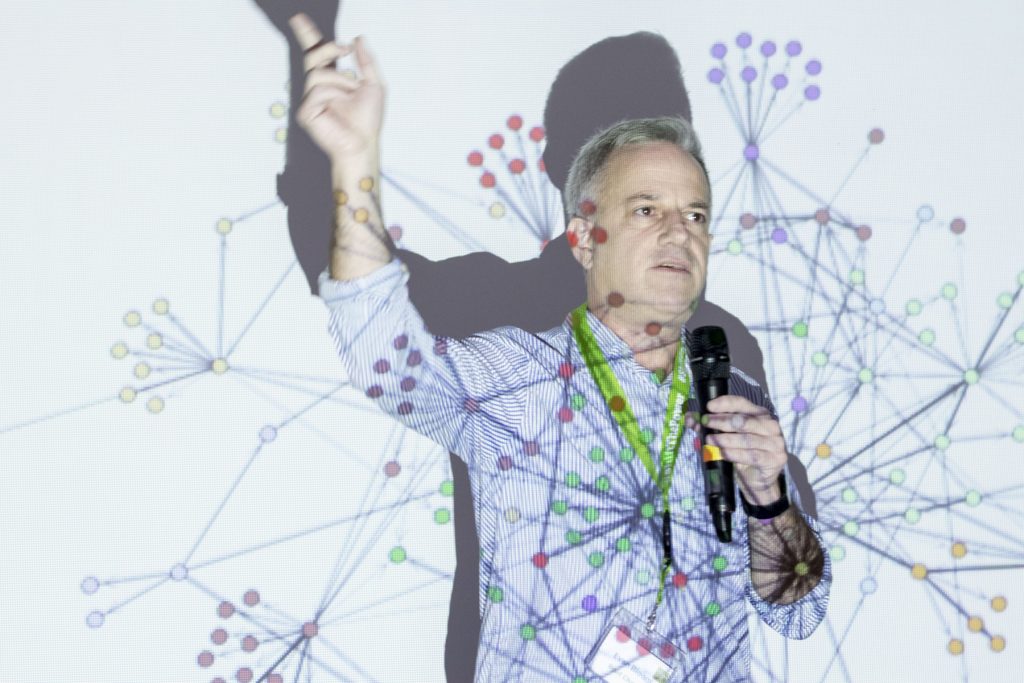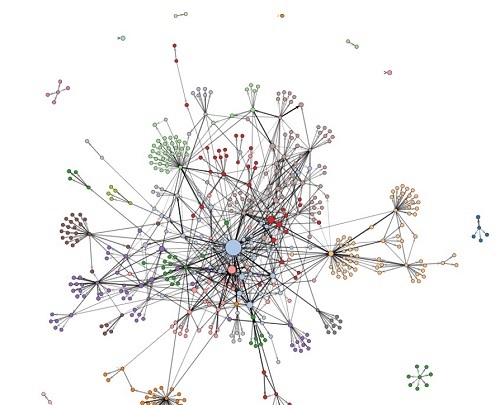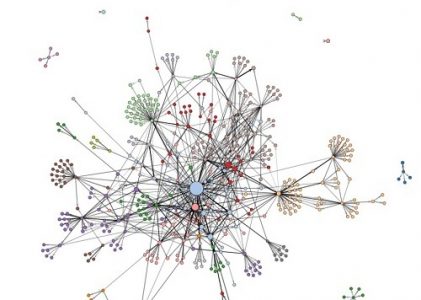
Over the past two years, participants in the #ShiftThePower movement have created a vibrant, living, and evolving network map of the community on the Pando platform, made up of more than 500 organizations and nearly 1,000 relationships. Originally created as a visual tool to understand both participation and representation within the #ShiftThePower community and strengthen global collaboration, the network map also offers a way to grow the movement by centering the power of relationships.
In this four-part blog series, Root Change and the GFCF, reflect on what types of organizations make up the #ShiftThePower community, how they are working with each other – and on what – as well as the opportunities out there to continue to strengthen the movement. In our final post, we’ll highlight our key takeaways and consider where we go from here.
Origins of the map and how it works
The #ShiftThePower network map was first launched at the 2019 “Pathways to Power” Symposium in London. The global event brought together 100+ people from civil society, philanthropy and international development for a conversation about “new ways of doing and deciding.” In the lead-up to the event, Symposium participants crowdsourced a list of key action areas from which change was already being driven, both at the local and global level. These included community philanthropy, funder practices, re-imaging the INGO, localization, local ownership, diversity, equity and inclusion, among others.
The map has continued to evolve organically since then, as #ShiftThePower participants have shared whom they go to for information, ideas, and support related to these action areas. The network map is a shared resource; everyone who has been invited in by a peer in the movement has equal access to the data and information and can use it to inform the ways they collaborate with others. Learn more about how it works here.
About this blog series
Back in July 2021, the GFCF and Root Change co-hosted a global virtual convening to revisit the network map in the wake of the unprecedented disruption to aid and philanthropy that has taken place over the last 20 plus months (watch the recording here).
COVID-19, #BlackLivesMatter, #CharitySoWhite, Decolonizing Aid…these disruptions have re-energized long-standing critiques about how the dominant funding systems operate, re-affirming the role of local civil society actors as essential frontline providers of humanitarian, economic or social assistance, and as defenders of human rights. But, we wondered, has anything really changed? Have new alliances and collaborations emerged or become stronger? How are they organizing? How and where are they being seen and heard, and their influence being felt?
The GFCF and Root Change teams caught up following the webinar to explore these questions together and to reflect on what we are all learning from the #ShiftThePower network map. Throughout this four-part blog series, we’ll share some of this exchange between GFCF and Root Change, and highlight opportunities to strengthen our collective work.
For readers following along, we encourage you to login to Pando and use the filters to make sense of the map for yourself. Are there opportunities that we missed for improved collaboration? Are there areas that we need to probe further? Do you see organizations that you would like to connect with to advance your work in the movement? Are you interested in participating in the map but don’t have a log-in? If so, reach out to [email protected] or [email protected].
Getting started with a birds’ eye view: Bridges and blockers

Root Change: This is a large and growing movement. It’s so impressive how engaged the #ShiftThePower community is! Over 100 relationships have been added since the July 2021 webinar and there are now 994 relationships and 517 organizations that have been nominated as members of the #ShiftThePower community.
The movement is very well connected at the centre. For example, we found that 30% of the relationships include the top 20 organizations in the eco-system. But there is also a lot of activity on the periphery. There’s an opportunity to bring in that periphery and create an even more distributed network, to foster more connections with those that are on the edges. What do you think this tells us about the #ShiftThePower movement?
GFCF: To us, this means thatas a strength, there is a critical mass. As a weakness, maybe we also have gatekeepers: organizations that could do more to help facilitate pathways or build bridges between their networks – and the specific collaboration area that they are most interested in – and other parts of the eco-system.
Root Change: That’s really interesting. There are numerous organizations in the map that are what we call “brokers.” These are organizations that sit between groups of actors – perhaps those at the centre and those on the periphery – and that have the ability to foster connections and collaboration, but also have the potential to withhold information.
From a structural point of view, we might argue that these brokers are doing exactly what we would want them to do: they’ve been energized by this exercise and have mapped their relationships to help us see partners that are legitimate and valued. This adds to our perspective of what is happening. From a strategic standpoint, the question might be: how do we engage these brokers and get them engaged in building the movement?
GFCF: It is important that those sitting in these positions broker connections between others in the movement and make introductions to help foster collaboration. Otherwise, they might not end up contributing to the overall growth and common goals of the movement.
Root Change: So, we hear you saying that there are key brokers that may or may not be aware that they play this role in the system, and they have important relationships that they can help bring into the movement. There is an opportunity for conversation and to explore this further to foster a sense of collaboration and shared goals.
Interested in understanding more about the #ShiftThePower network map? Stay tuned for the next three parts in this blog series!
